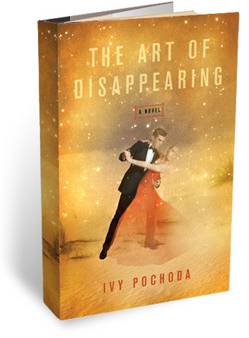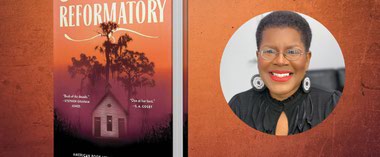Novelist Ivy Pochoda doesn’t get Las Vegas literally correct in her new book, but she wasn’t trying to. “One of the things I like to do when I write is transform the surroundings to suit my purposes,” she says of the way the city is depicted in her first novel, The Art of Disappearing. Published this month by St. Martin’s Press, it concerns the narrator’s love for a Vegas magician. It’s the latest entrant in the growing collection of literature set here.
“I like to adapt things so that it is not quite recognizable,” she says. “I like to be able to change things.” So her novel begins by mixing Vegas cliché with proper nouns of pure fiction: “I married Tobias Warring in the Silver Bells All-Nite wedding Chapel in Las Vegas. It was the conventional start to our unconventional story.”
In Pochoda’s hands, Vegas winds up being less an actual place than a metaphor that works as a setting.
“I never lived in Las Vegas. I have not read about it much. I made up a lot of it. But Las Vegas makes the novel lively. I was able to focus on the parts of Vegas that interest me and ignore the oversaturated parts. I am attracted to Downtown, not the Strip. At Fremont Street, everything is stripped down to the basics. The characters in my novel are not set in the modern world. In their professions in Vegas, they are just trying to scrape by. For them Fremont Street is a bit out of time, yet Las Vegas also makes the book more modern.”
Asked if she felt the need to contend with either the classicFear and Loathing in Las Vegas or Charles Bock’s more recent best-seller, Beautiful Children, Pochoda answers, “No. Not in the slightest.” She notes that her salvation came in not being worried about details or accuracy: “I don’t want people to worry about what that park should be named. It isn’t a travelogue.”
Still, she did attempt to capture some things accurately: “The last time I was there I definitely did some research. I went down to Fremont Street and took 10 rolls of film of stuff I wanted to use.”
Just as Pochoda alters Las Vegas, the novel centers on her fictional magician being able to alter reality. “I was intrigued by the idea of what a perfect magic trick was. And I thought a perfect magic trick was one that was a one-way street. If you launched something into thin air and didn’t find it again. I thought the true art of magic was to make something disappear, to lose it permanently.” Hence the title, a direct reference to a poem by Elizabeth Bishop, in which the poet slowly loses everything from keys to continents.
Perhaps, more than any of the well-known novels set here, The Art of Disappearing uses the art of fiction to portray Vegas the old-fashioned way. This might be a good way to write about a city already created as fantasy.







Previous Discussion: